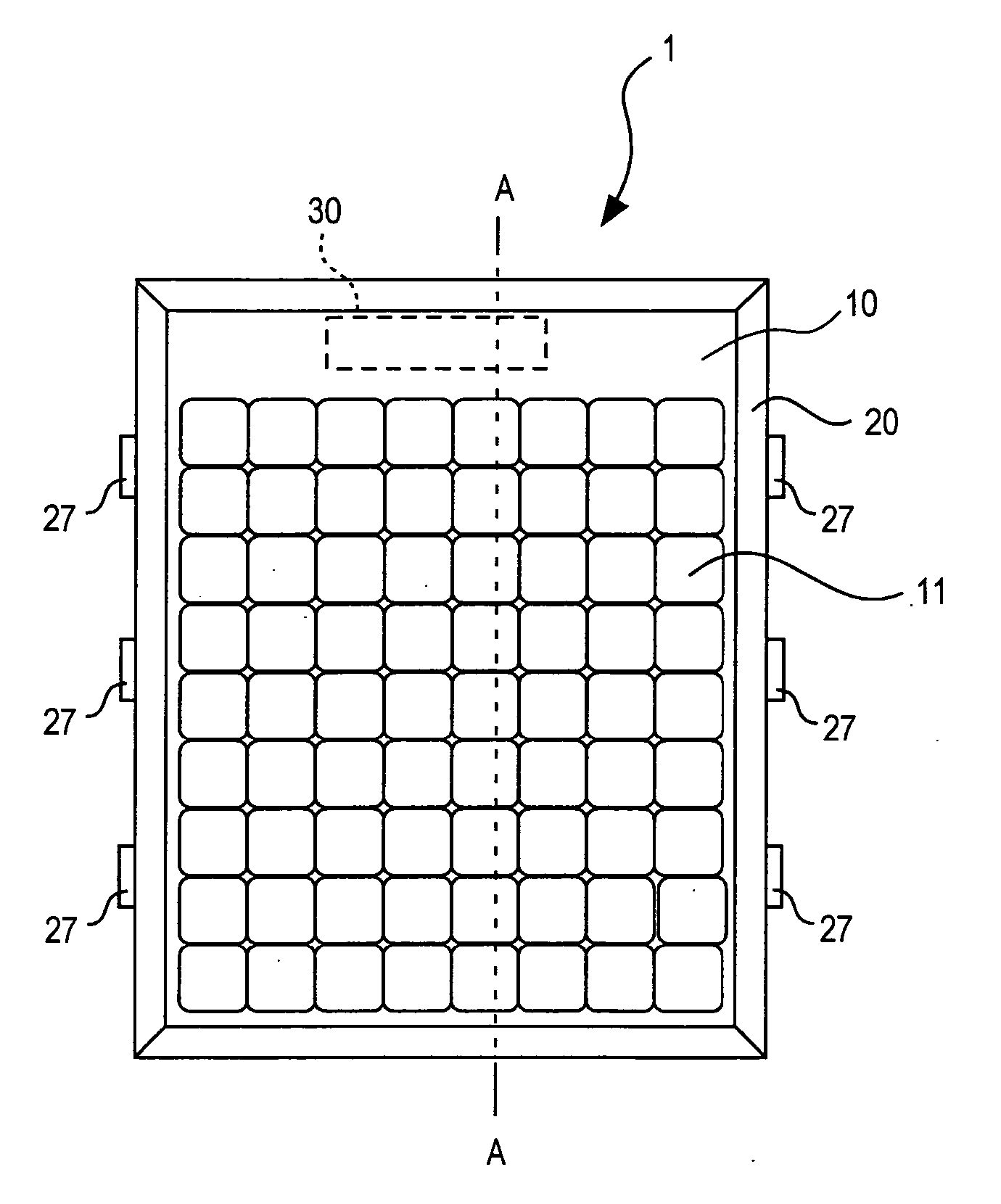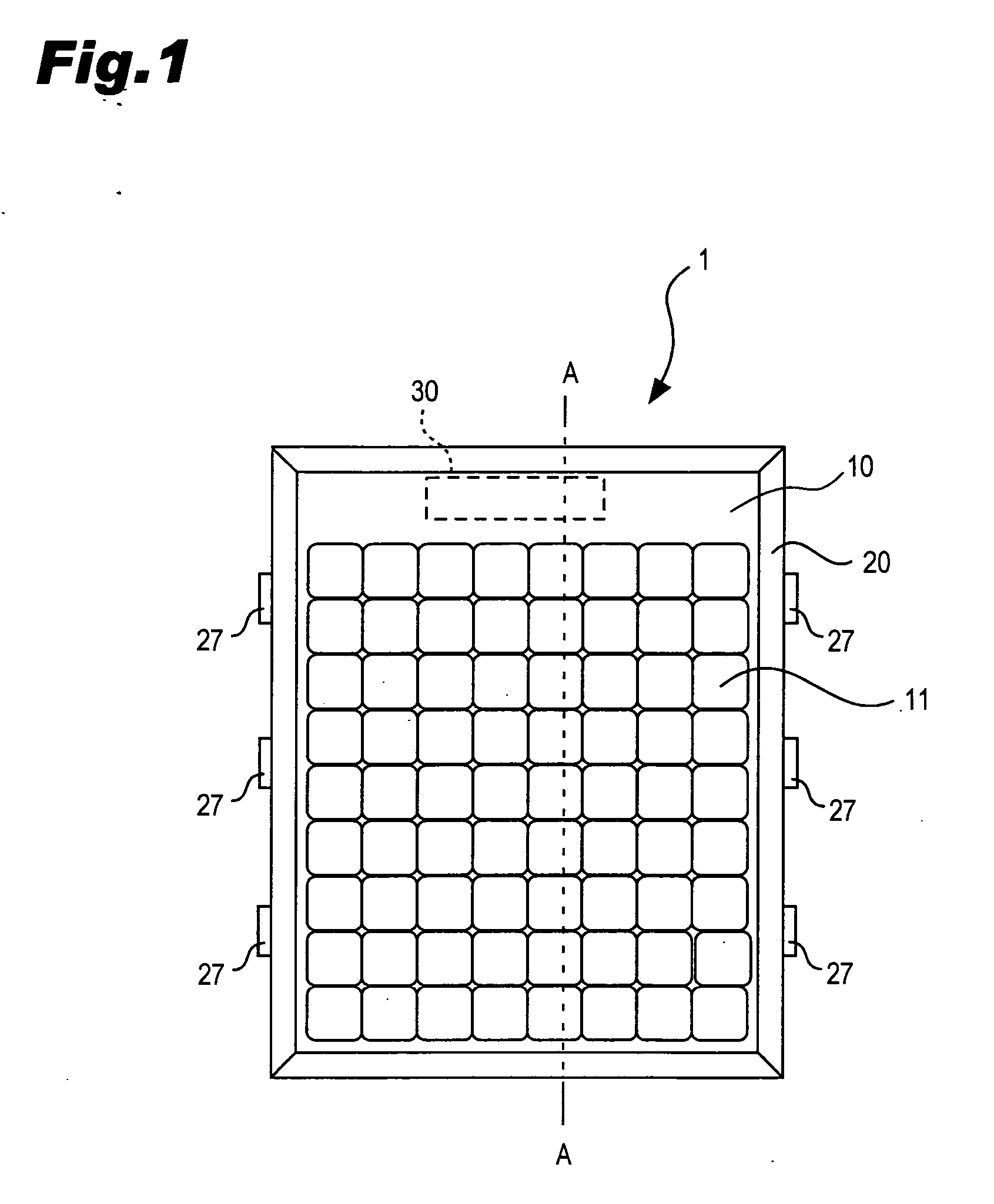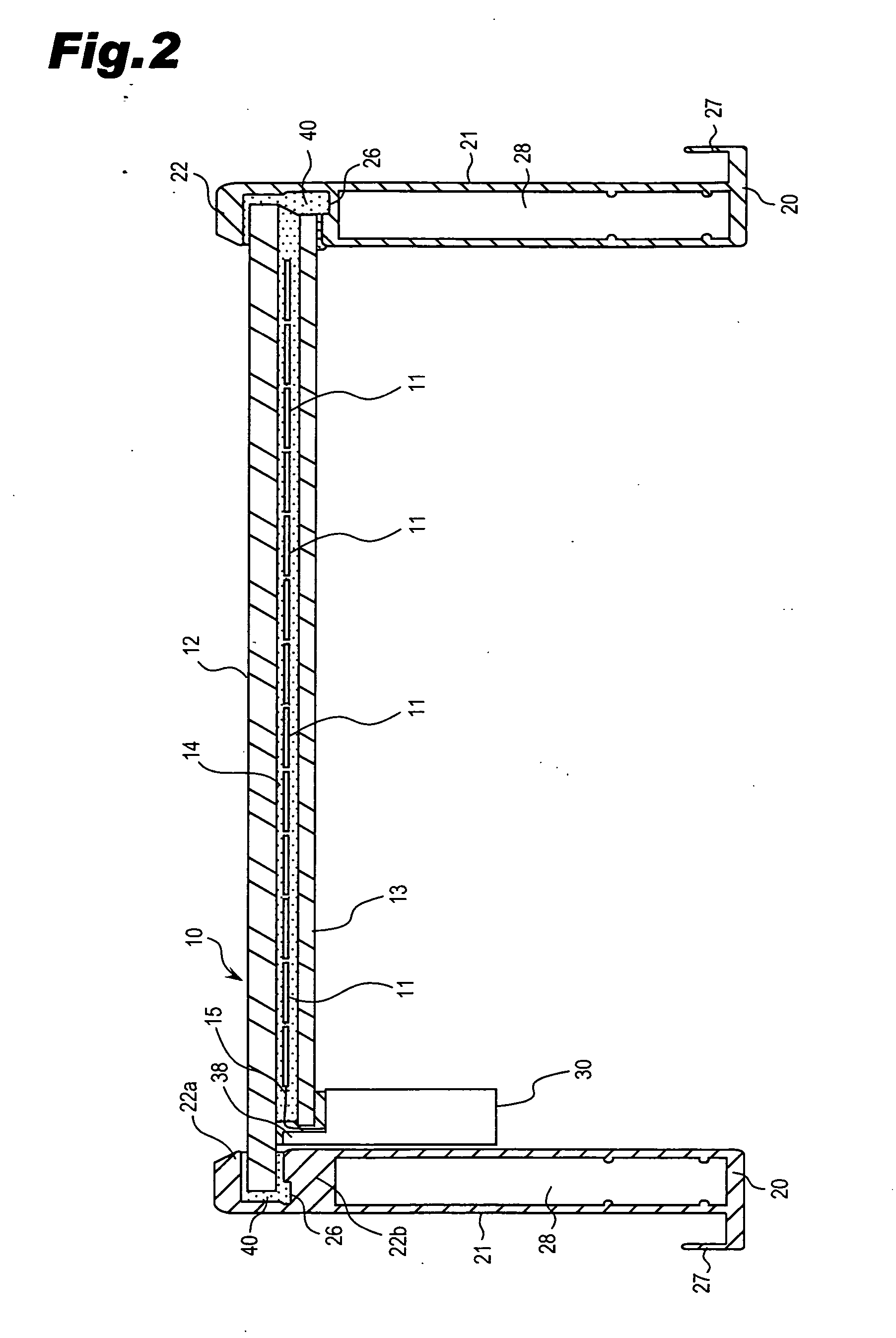Photovoltaic module
a photovoltaic module and photovoltaic technology, applied in the direction of heat collector mounting/support, light radiation electric generator, lighting and heating apparatus, etc., can solve the problems of increasing the manufacturing cost of the connection, the terminal box disposed on the expanded part of the glass cannot be adapted to a type of photovoltaic module, and the failure of the insulation, etc., to achieve favorable appearance of the photovoltaic modul
- Summary
- Abstract
- Description
- Claims
- Application Information
AI Technical Summary
Benefits of technology
Problems solved by technology
Method used
Image
Examples
first embodiment
[0039]FIG. 4 is a schematic cross-sectional view illustrating a solar cell used in the present invention. FIG. 5 is a schematic structural diagram of manufacturing equipment for manufacturing photovoltaic submodules used in the present invention. FIG. 6 is a cross-sectional view of a photovoltaic submodule used in the photovoltaic module according to the present invention.
[0040]FIG. 7 is a plan view illustrating a part of the connection leads of the photovoltaic submodule used in the present invention. FIG. 8 is an exploded perspective view of a terminal box used in the first embodiment of the present invention. FIG. 9 is a perspective view illustrating the terminal box used in the first embodiment of the present invention. FIG. 10 is a plan view illustrating the terminal box attached to the photovoltaic submodule.
[0041] As shown in FIGS. 1-3, the photovoltaic module 1 of the present invention comprises a rectangular double-sided light receiving type photovoltaic submodule 10 inclu...
second embodiment
[0078] As shown in FIG. 11, in the photovoltaic module 1a of the second embodiment, dummy cells 11a are placed, as if the solar cells 11 are arranged orderly, in the region on the light-transmitting substrate 12 and above the terminal box 30, in which the solar cells are not provided. This arrangement of the dummy cells 11a enhances the design of the photovoltaic module 1. The dummy cells 11a can be stuck or printed at predetermined positions on the light-transmitting substrate 12.
[0079] If the dummy cells 11a are subjected to a treatment so as to irregularly reflect light, which would have passed through the photovoltaic submodule 10 without the dummy cells 11a, into the solar cells 11, the photovoltaic module 1 can improve the utilization efficiency of light.
third embodiment
[0080]FIG. 12 is a cross-sectional view of a relevant part of a photovoltaic module according to the present invention.
[0081] As illustrated in FIG. 12, the terminal box 30 is attached near the outmost edge of the rear surface side light-transmitting substrate 13 of the photovoltaic submodule 10. A printed area (a colored area) 19 is provided on the light-receiving side light-transmitting substrate 12 and above the terminal box 30. As illustrated in FIG. 12, the printed area 19 can hide the adhesive used for attaching the terminal box 30 to the rear surface side light-transmitting substrate 13 when viewed from the light-receiving side. The terminal box 30 can be made invisible too from the light-receiving side, which makes it more aesthetically pleasing of the photovoltaic module.
[0082] The printed area 19 does not need to be shaped like the dummy cell but can have any shape as long as the printed area can serve as a masking part for hiding the terminal box 30 and other parts. The ...
PUM
| Property | Measurement | Unit |
|---|---|---|
| Color | aaaaa | aaaaa |
| Current | aaaaa | aaaaa |
| Light | aaaaa | aaaaa |
Abstract
Description
Claims
Application Information
 Login to View More
Login to View More - R&D
- Intellectual Property
- Life Sciences
- Materials
- Tech Scout
- Unparalleled Data Quality
- Higher Quality Content
- 60% Fewer Hallucinations
Browse by: Latest US Patents, China's latest patents, Technical Efficacy Thesaurus, Application Domain, Technology Topic, Popular Technical Reports.
© 2025 PatSnap. All rights reserved.Legal|Privacy policy|Modern Slavery Act Transparency Statement|Sitemap|About US| Contact US: help@patsnap.com



